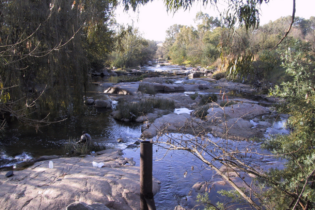As the silver waters of the Kishanganga rush through this north Kashmir valley, Indian labourers are hard at work on a hydropower project that will dam the river just before it flows across one of the world’s most heavily militarised borders into Pakistan.
The hum of excavators echoes through the pine-covered valley, clearing masses of soil and boulders, while army trucks crawl through the steep Himalayan mountain passes. The 330MW dam is a symbol of India’s growing focus on hydropower but also highlights how water is a growing source of tension with downstream Pakistan, which depends on the snow-fed Himalayan rivers for everything from drinking water to agriculture. Islamabad has complained to an international court that the dam in the Gurez valley, one of dozens planned by India, will affect river flows and is illegal. The court has halted any permanent work on the river for the moment, although India can still continue tunnelling and other associated projects. In the years since their partition from British India in 1947, land disputes have led the two nuclear-armed neighbours to two of their three wars. Water could well be the next flashpoint. “There is definitely potential for conflict based on water, particularly if we are looking to the year 2050, when there could be considerable water scarcity in India and Pakistan,” says Michael Kugelman, South Asia Associate at the Woodrow Wilson International Center for Scholars in Washington.“Populations will continue to grow. There will be more pressure on supply. Factor in climate change and faster glacial melt … that means much more will be at stake. So you could have a perfect storm which conceivably could be some sort of trigger.”
It’s not just South Asia – water disputes are a global phenomenon, sparked by growing populations, rapid urbanisation, increased irrigation and a rising demand for alternative power such as hydroelectricity. Source: reuters






